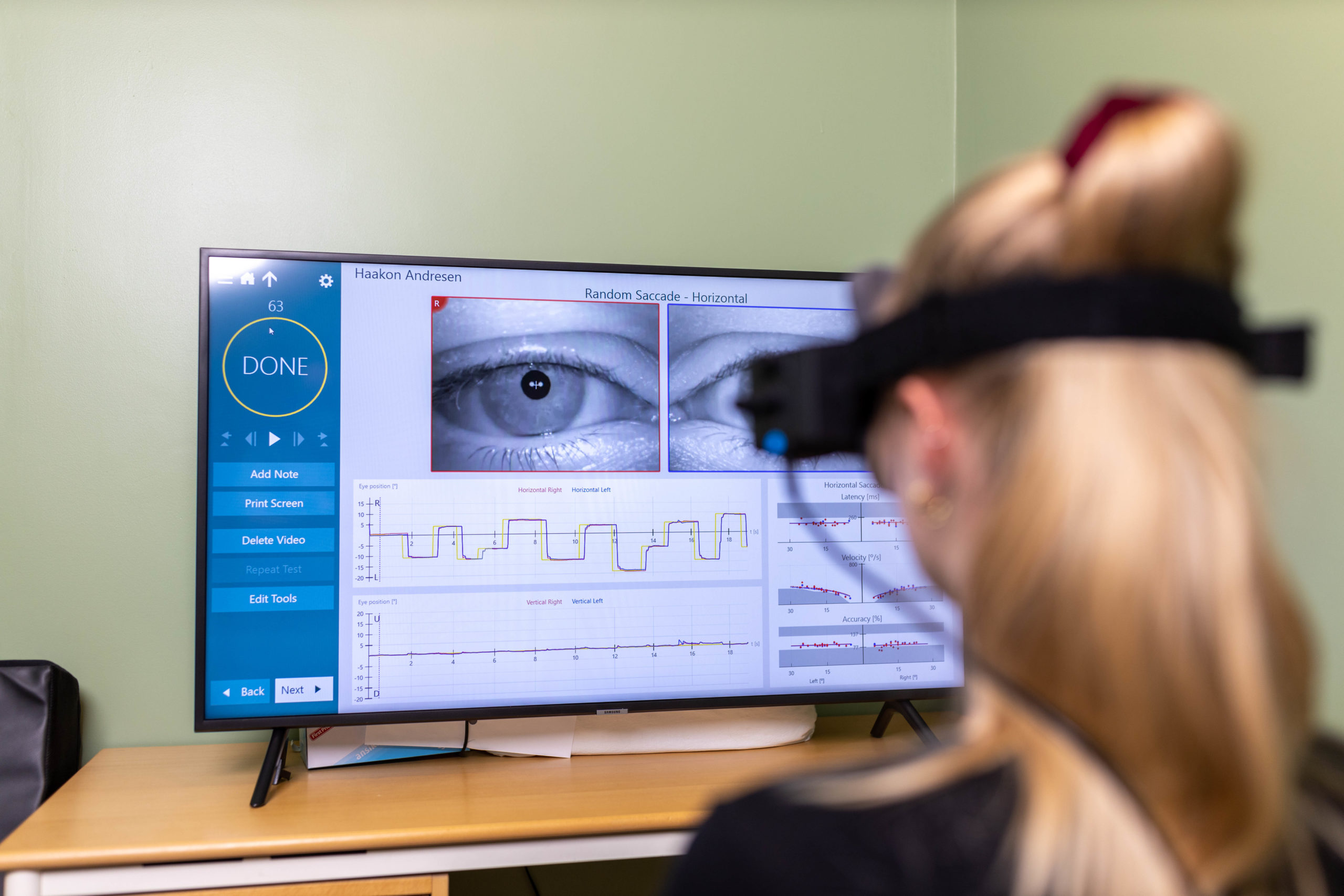Here at the clinic, we use Video-oculography (VOG). This is a visual test that can help us neuro-chiropractors diagnose vision problems and general function of the nervous system. The test measures eye motor function and gaze fixation ability by filming eye movements while a patient looks at different points and movements. This is done under the guidance of a specialist. The results can reveal nystagmus, impaired tracking and other motor problems that can cause symptoms such as dizziness, visual disturbances, headaches and neck pain. In this article, we'll take a closer look at how video-oculography works and how it can help identify and treat vision problems and other health issues.
What is video-oculography?
Video-oculography is an advanced system that uses a camera and a computer to measure eye movements and gaze fixation ability. The test is performed by the patient looking at various points and movements while their eyes are followed by a camera. These movements are recorded and analyzed by a computer, which can detect any problems in eye motor function and gaze fixation. The test is non-invasive and painless, and can be performed on both adults and children.
Video-oculography can help diagnose and treat a range of vision problems/disorders, including nystagmus, convergence spasm, eye movement disorders, and other neurological issues. By identifying these issues, the treating specialist can provide a more accurate diagnosis and prescribe the right treatment. The test can also help monitor the effectiveness of the treatment over time, and adjust it if necessary to ensure the best possible outcome.
What are the benefits of video oculography compared to conventional oculography?
Video-oculography is an advanced technology that can provide much more accurate and detailed information about a patient's eye movement than conventional oculography. The benefits of video-oculography include:
- More accurate results - Video-oculography uses high-speed cameras and computer technology to record eye movements in real time. This provides more accurate and detailed data than conventional oculography, which typically uses electrodes attached to the skin around the eyes.
- Improved diagnostic accuracy - The detailed data collected using video-oculography can help to more accurately diagnose various eye and neurological disorders. This in turn can lead to more effective treatment and better patient outcomes.
- Less invasive - Video oculography is less invasive than conventional oculography and does not require electrodes to be attached to the skin around the eyes. This can make the test more comfortable for the patient.
How does the test work?
The video-oculography test works by recording and analyzing eye movements in real time while a patient looks at different points and movements. During the test, the patient will be asked to focus on different points and movements displayed on a screen. While the patient is looking at these, the camera will record the eye movements and transmit the data to the computer. Based on this data, the specialist will be able to assess whether there are any abnormalities in eye motor skills or gaze fixation ability.
Overall, video-oculography is a useful and reliable test that can help diagnose and treat vision problems and general neurological health.
What can the results reveal?
The results of the video-oculography test can reveal a range of eye motor problems. The test can reveal nystagmus (involuntary eye movements), reduced gaze fixation ability, strabismus and eye movement disorders. By identifying these issues, the treating specialist can provide a more accurate diagnosis and prescribe the right treatment. The results can also help monitor the effectiveness of the treatment over time, and adjust it if necessary to ensure the best possible outcome.
In addition to helping with vision problems/visual disorders, video-oculography can also be useful for diagnosing and monitoring other neurological conditions. The test can detect abnormalities in eye motor function and gaze fixation that may be caused by stroke, concussion, epilepsy and other neurological issues.
In summary
In summary, the video-oculography test can help diagnose and treat a range of vision problems/visual disorders and neurological conditions. The test can detect abnormalities in eye motor function and gaze fixation ability that can explain a range of symptoms, including balance problems, dizziness, fatigue, visual disturbances, headaches and neck pain. It is recommended that this test is performed by a specialist in neurology. If you experience any of these symptoms, you should contact the clinic to discuss whether an examination with us, which includes the video-oculography test, may be relevant for you.


